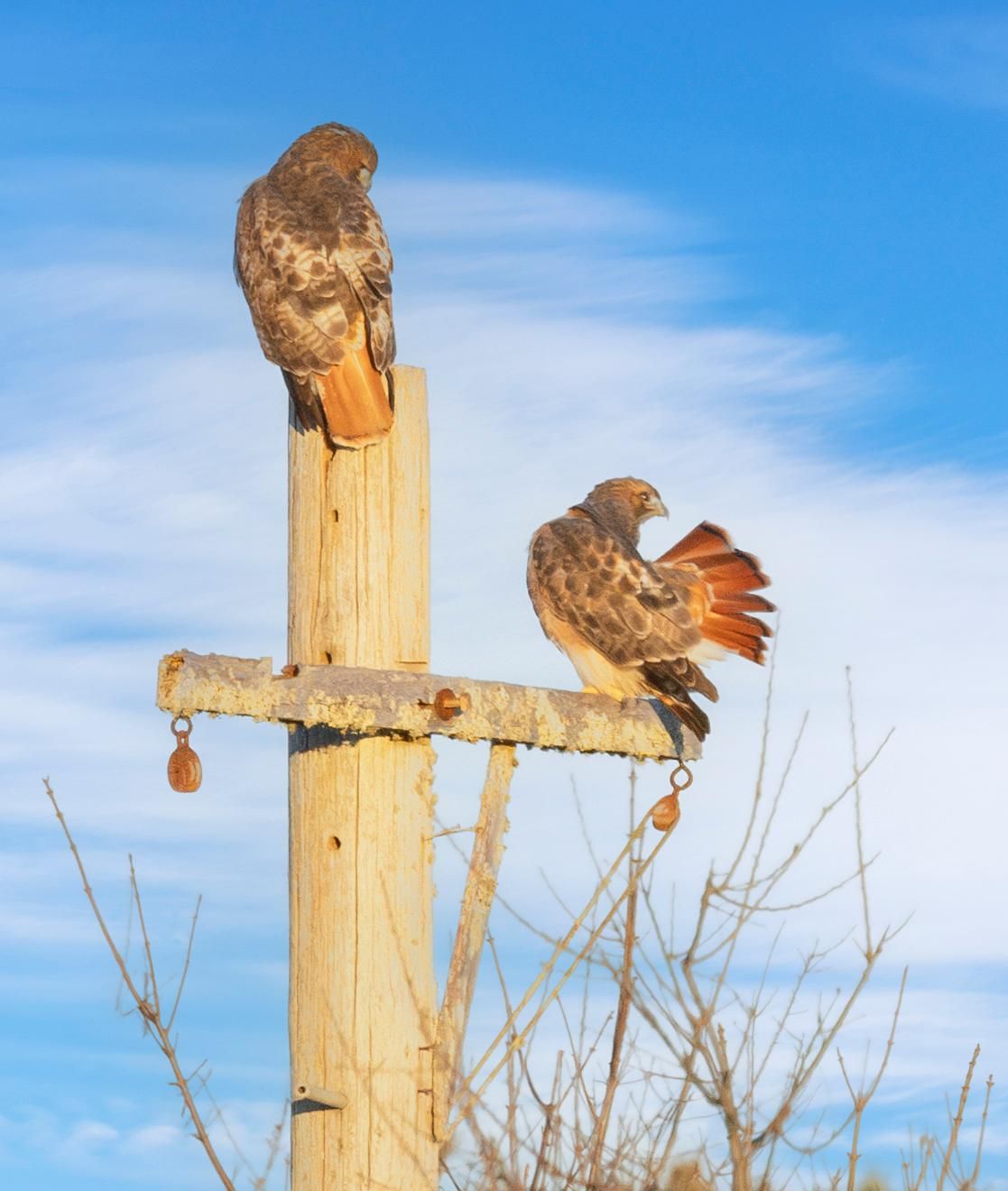Keep Calm and Bird On: February 2024
“If you don’t look, you don’t see. You have to go and look.”
-Edith Andrews

It might seem strange to look for signs of spring when we have barely had a taste of winter. The dull, dim, damp days of February hardly seem conducive to winter sports. Other than cross-country…slogging, why go out at all? With proper clothing, exercise in any weather is invigorating. So, what do we look for? Signs of spring are subtle, but they are there.
We used to think of the return of Red-winged Blackbirds, always expected on February 22, as the first sign of Spring. But now we see them year-round, particularly scarfing up seed at our feeders. Almost all are young males, with just a few adult males scattered among them. But there are other things to watch for: swelling buds of swamp azalea, leaf bracts on blackberry vines, and perhaps most heart-warming of all, Red-tailed Hawks pairing up.
At first you might see one or the other sitting alone on a branch. As in many raptors, the female is the larger of the two. But soon, another may be seen nearby, checking things out. Established pairs usually remain bonded, and often re-use old nests. Both birds will do an aerial display, often circling in updrafts on a fine day. Both collect sticks and twigs and bring them to the chosen nest site, but the female does more shaping of the interior. It may take as few as three to as many as five weeks before the first eggs are laid. They average two to three eggs, sometimes as many as four. Both parents incubate, but as hatching and nestling stages approach, the male does more food collection and the female more brooding of eggs and young.
Monitoring an active nest is a great way to welcome Spring. And by the time the young hatch and start begging, there are even more signs to watch for.
Photo by Tom Griswold
Recent Posts




